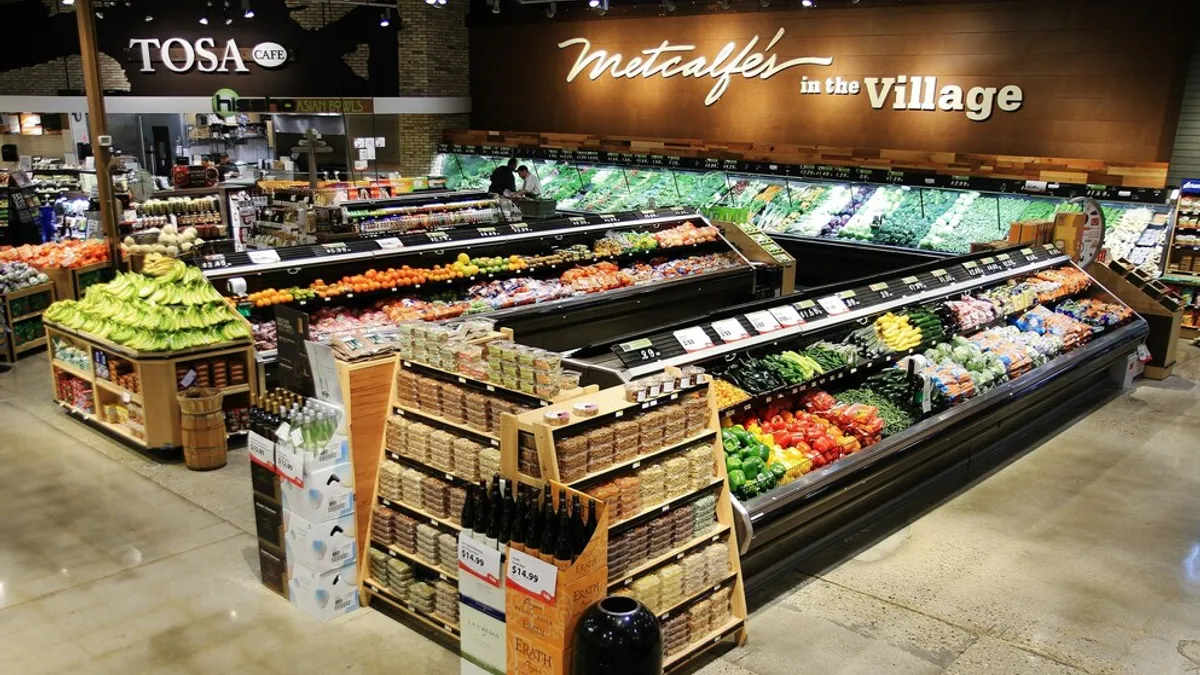UPDATE: June 10, 2019: Grocery Outlet has officially announced the terms of its IPO. The retailer plans to raise $250 million after expenses by selling 17.2 million shares of common stock priced between $15 and $17 per share. If approved, its stock will be listed on the Nasdaq exchange under the symbol "GO." The retailer, which saw net sales of $2.3 billion in fiscal 2018, plans to use net gains from the IPO to repay outstanding term loans. Grocery Outlet estimates the IPO will reduce its debt from $854 million to $610 million.
Dive Brief:
- Grocery Outlet has confidentially filed a draft registration statement for an initial public offering with the Securities and Exchange Commission, according to a company press release.
- The company has not yet determined the number of shares to be offered or a price range for the proposed offering. A review process by the SEC will take place before the IPO commences.
- Grocery Outlet has more than 300 locations, each independently owned and operated, with private equity firm Hellman & Friedman having majority ownership of the company. The chain's annual sales total more than $2 billion.
Dive Insight:
Grocery Outlet's opportunistic buying model and independently owned stores have carved out a unique place in the burgeoning discount grocery segment. Now, the company hopes to further fuel its growth by going public.
Up until now, Grocery Outlet has focused its efforts primarily in the Western U.S., with recent store openings in Tacoma, Washington and Redding, California. The chain also operates locations in Pennsylvania, and executives have said they hope to make a nationwide push. It opened 30 stores last year and plans to open the same number this year.
According to sources recently interviewed by Grocery Dive, Grocery Outlet has a unique position among discounters like Aldi and Lidl that primarily sell their own brands. Grocery Outlet buys excess inventory and sells at a 40% to 70% discount over conventional grocery competitors. The company is also pushing further into fresh foods as demand rises and chains like Dollar General stock more produce and other perishables.
"Grocery Outlet can position [itself] as being the 'local store' in the communities it serves, and its customers leave feeling smart for having shopped there," Carol Spieckerman, president & CEO of Spieckerman Retail, recently told Grocery Dive. "It’s a powerful combination that should translate well in enumerable markets."
The filing follows Grocery Outlet's recent restructuring of its executive ranks. In December, Eric Lindberg was named CEO and MacGregor Read was named vice chairman. The two, who are both descendants of founder Jim Read, had previously held the title of co-CEO. Grocery Outlet at the time also promoted RJ Sheedy from chief merchandise, marketing and strategy officer to the role of president.
Shoppers have widely embraced the discount grocery scene in the U.S., and Grocery Outlet faces major competition from Aldi, Lidl, Save-A-Lot and even select dollar stores that have a strong grocery offering. Most of these competitors are privately owned, however, and an influx of capital as a publicly traded company could help Grocery Outlet gain an edge.
While many grocery companies such as Kroger and Sprouts are publicly traded, many remain privately owned like Publix. Recent efforts around IPOs include BJ’s Wholesale Club, which completed an IPO to return to public markets last summer, and Albertsons, which has repeatedly tried to file an IPO but has been unable to gain enough investor support.
Correction: A previous version of this article misstated the publicly traded companies. Kroger and Sprouts are publicly traded.
In addition, previous version of this story misspelled the last names of Eric Lindberg, MacGregor Read and Jim Read. The company also plans to build 30 new stores this year.











